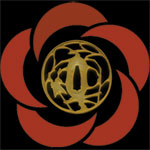 |
The shapes of Aikidoby Peter Megann, B.A.F. General Secretary// Источник: B.A.F. Newsletter, Март 2001, No 38Peter Megann talks to Kanetsuka Sensei about the symbols of Aikido principles. P.M. Sensei, one reads in books on Aikido the importance of the three geometric shapes, the circle, the triangle and the square. I'd be interested to hear how you interpret these. Which is the most important, do you think; or are they all of equal importance? K.S. That's a difficult question! Normally in Japanese we say 'maru, sankaku, shikaku" ('circle, triangle, square'). You certainly find them mentioned in Zen books P.M. So this symbolism is not limited to Aikido. K.S. No; I think you'll find they are common to many cultures: not just in Oriental philosophy. Perhaps you'll find them in ancient Egyptian and Greek cultures too. From my experience it's very simple. Our stance - kamae - is like sankaku. But not just a two-dimensional triangle: it's three-dimensional. Four faces like a pyramid. And of course a pyramid is square at its base; and its sides are made up of four triangles. Our feet are not pointing in a straight line, but are turned at an angle of about 60° from each other. Our stance becomes like a wedge; and like a wedge-shaped object it can easily deflect an on-coming object or body. Also the point of this wedge means that it has more concentrated power towards our attacker/partner. Likewise the circle must be thought of as 3-dimensional. It becomes a sphere. And the square becomes a cube. Our contact with our partner must have the solidity of the cube (though by 'solid' I don't mean stiff; more like 'positive' and 'stable'), which is founded on our triangular stance. Then when we change direction (tai-no henko) we move in a circular motion. But the triangle is important for us to avoid any clash with our partner. We can think of the triangle again as being at the base of our movement, or representing the top of our movement. It's rather like the Star of David emblem of the two combined triangles: one triangle pointing up, the other down. P.M. I'm not sure if I understand what you mean by the triangle pointing down. K.S. When we make tenkan, our centre spins on the point of this triangle. Also, when we make irimi movement, we don't go straight into our partner, but at an angle to our partner - though still maintaining contact between our centre and that of our partner. The principles of the circle or sphere, as well as that of the triangle/pyramid and square/cube are most clear in the shiho-giri or shiho-nage movement. That's why we should practice these movements regularly. As you step off the attacking line and step forwards you cut up with a circular movement of your hand; then, rotating your body, you turn back and cut down. At the end you finish in a stable posture. In this way you lead your partner without any clash. P.M. So these shapes are working all together; they are interwoven, you'd say. K.S. Yes: these three symbols must work in every technique; and that's why we talk of keiko: repeating and repeating. Our movements shouldn't work just by chance. They must work for sure against any attack and with any technique. From the more simple exercises like katate-dori tenkan-ho and ryote-mochi kokyu-ho to the more complicated techniques. We can only achieve this perfection or harmony of movement by endless practice. And we must study these movements slowly and carefully. No need for a lot of sweat and exhaustion! If you are doing the movements correctly both you and your partner feel good. Studying how to use your whole body, how to shift your centre of gravity, how you turn, how your hands and centre are always working together. And during all this practice you must maintain a humble attitude and respect your partner. There should be no feeling of aggression or competition. No winner, no loser. That's the meaning of Aikido. After "The Proportions of the Human Figure" of Leonardo da Vinci 
|
||||
| © Рюсинкан.ру |
